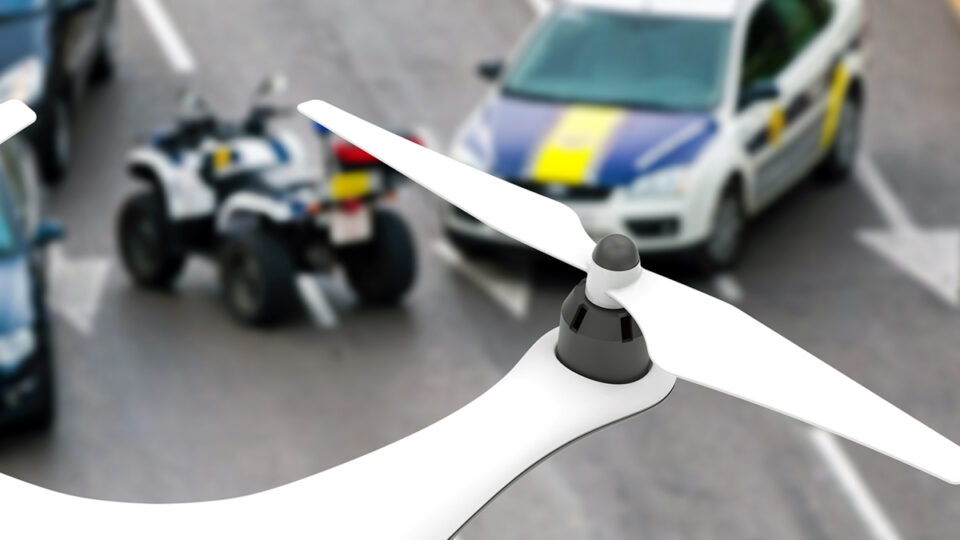
Six steps to successful city and nationwide video surveillance systems
(Refreshed for 2024)
Having built a professional career in video surveillance for almost twenty years, I have had the privilege to work in the design of city and nationwide video management systems (VMS) with several public security authorities. The largest systems consist of tens of thousands of cameras, hundreds or even thousands of operating stations, multiple subsystems, segments, and numerous users. Each of these systems is a complicated structure, targeted to fit to the needs and requirements of each customer and their operational environment.
Hitting a home run with complex systems of this scale is not an easy task. In my experience, however, there are a few steps that can be taken to significantly improve the chances of a successful outcome. Below, I share my conclusions and learnings on what these steps are and why they play such an important role in building city and nationwide VMSs.
1. Select a partner with the right skills and experience
Nationwide VMS systems are technically complex and, when building them, multiple issues need to be considered that depend on each operating environment. It is important to get the system design and requirements right from the very beginning to avoid shortcomings that are costly and time consuming to correct at a later stage.
Selecting the right partner plays a key role in achieving a successful outcome that meets your needs. Even your partner’s sales and technical support teams have a significant impact on how well your wishes will finally be translated into the VMS. Be wary of a partner that says yes to all your requests – instead, select one that focusses on finding out what features, functionalities and technologies are truly needed and how they best serve you.
In large-scale video surveillance systems, there will always be some surprises. An ideal partner should be able to offer you the support of an experienced and professional team with the ability to guarantee that you will get the right pictures, at the right time and in the right place in each situation.
2. See if there is a need for an umbrella system
Requirements of nation citywide video surveillance systems can often be achieved more easily when the system is modular, meaning that it is built as federated from multiple smaller systems. In such systems, the VMS can work as an umbrella, integrating all subsystems under a unified user interface that allows efficient monitoring and management of the entire ecosystem.
Compared to single native systems, the modular structure offers more options for separating different parts of the system regarding, for example, cost sharing, maintenance, and user privileges. It also allows you to flexibly share resources between different organisations and scale up by integrating third-party systems.
3. Decide whether go to the cloud or not
Whether or not to go to the cloud is one of the questions most frequently asked in the field of video surveillance. Despite the hype, the cloud is not a magic wand that can solve all your problems. In fact, a modular VMS provides most of the advantages familiar to cloud-based solutions but without their drawbacks:
- Videos can be accessed from different locations in the network within certain limits mainly related to user rights, bandwidth, etc. In other words, cameras and network video recorders can be in totally different places than the displayed video.
- Reliability is improved compared to cloud-based solutions as both local and central units can be used to guarantee operations if network connections are lost between sites.
At the time of writing this also due to need for 24/7 usage, heavy storage and bandwidth requirements the Cloud based solutions are not cost-efficient for large scale video surveillance systems. However, situation might be different if there is multiple locations with very low camera count per site.
From the legality point of view, a modular VMS is also a safer solution, at least when considered from the point of view of the European Union’s General Data Protection Regulation (GDPR) and also many national laws and regulations.
For example, as an owner of all the data produced and stored in your VMS, you might be required to clear specific personal information and all its copies from your data – and to prove that you have done so. The task is considerably easier to perform within a modular VMS than in any cloud-based solution.
4. Think about the use case before opting for video image analysis
Another often-desired feature of a modern video surveillance system is video image analysis (VIA). The reason for this is that it is expected to provide actionable insights on the areas monitored with the video surveillance system and speed up decision-making.
The video image analysis usability is affected by the use cases. In my own opinion, VIA is at its best in the areas there the environment is stable and it is easy to define then to launch alarms or collect metadata. Perfect example of this is utilizing in-camera analytics to detect motion in places with stable lighting conditions and where no one is expected to be at certain times. In these types of environments, the system is easy to set up, reliable and really cost-efficient and provides additional value. Another example, where VIA is usually quite obvious choice is using license plate recognition for entering and leaving parking areas and halls.
Please still keep in mind that the usability of VIA is heavily affected by issues such as weather, lighting, camera location, accuracy, and even applicable laws and legality standards that restrict how and where it can be used. For example, a 95% accuracy rate may sound very high at first, but it may not be even close to enough. If 95% of 100,000 people are identified, 5,000 are not, and there are probably those among them who should have been identified. Also, if VIA is used in the environment / use case not really suitable for it there could be even hundreds of false alarms every day resulting to that all VIA alarms will be ignored after a while.
Before opting for VIA, it is wise to consider whether environment is right for VIA, what you really want to achieve and is VIA the most cost-efficient way to provide what you need, or would some other means be more effective?
5. Ensure sufficient network capacity and security
Network capacity and security demands are very critical in large-scale video surveillance systems and there are a few basic things to keep in mind:
- You need components in both ends of your system: at the edge where video cameras are located, as well as in the operation centres.
- IP-based video surveillance systems consume lots of bandwidth, even with the help of multicast. Pay attention to how network video recorders are placed as it can greatly help you reduce the network load.
- Network and stream conversions may be needed when different networks are involved, including unicast to multicast conversion, video transcoding and HSL streaming.
All the above have a role to play in how much bandwidth your system requires. Investing in thorough system design can help you tackle the challenge, and it is also absolutely important from a network security perspective.
From the security point of view, unauthorised access to video streams is a serious issue but the biggest risk for your network security comes from unauthorised access to edge units. Changing passwords, disabling unneeded services and network connections (e.g., maintenance Wi-Fi from cameras), and placing units in hard-to-reach places are all necessary actions to minimise security threats, but it is worth noting that even special network protection units exist for the edge units.
Protecting the central units follows the same protocol: change the default passwords, default ports of the services, limit the user and administration rights, and don’t forget to also protect the system documentation.
6. Consider who you can trust
Your VMS provider and system integrator will learn a lot about your operating environment and especially about your network. This information is needed to provide an optimal solution for you, in commissioning of the system, as well as in support activities. Unfortunately, the same information can also be used to find weaknesses in the system and learn, for example, how to by-pass network protection.
Trust is therefore among the most important aspects of a building a modern video surveillance system. Choose your system providers carefully and prefer ones that have no ties to suspicious parties – whether companies, individuals, countries, or anyone you can’t trust.
All things considered, VMS is a highly powerful tool for public security under normal circumstances, and its relevance in the public sector grows tremendously during crises and disturbances. As technologies evolve, it is easy to get overwhelmed by the possibilities they offer, but it still pays off to not give too much weight to all those nice-to-have features. What matters the most is a comprehensive assessment of your current and future needs as well as the costs and benefits of the options available. A future-proof VMS fits seamlessly into your ecosystem, supports you in what you need to achieve, and is ready to evolve alongside your changing environment and requirements.
Sami Marjoniemi
Sami Marjoniemi
I’m Teleste Video Security business Sales Director with over 20 years experience of selling state of the art technical systems and high-end Software. Since 2005 I have been privileged to be part of the development of video security industry. Together with our Team of experts, and with our Customers we are passionate. We see our duty in building smart, safe and smooth video security solutions.
Please visit my LinkedIn for more information.




